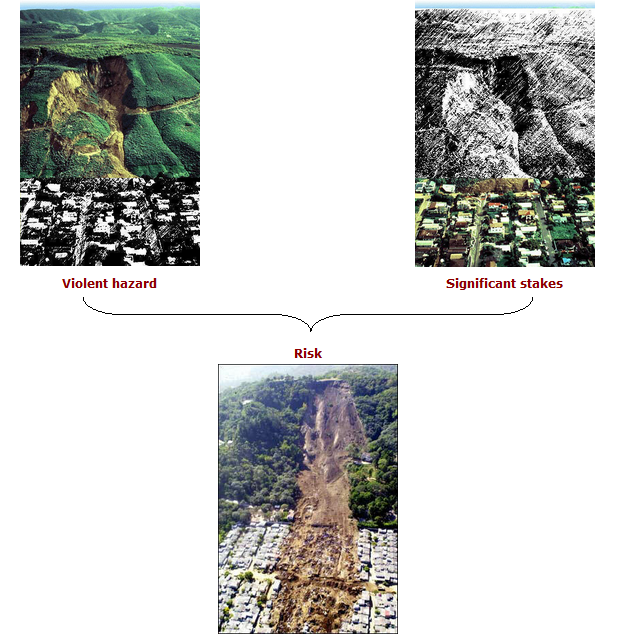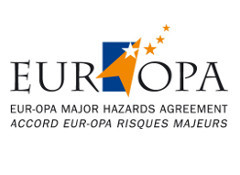Concept of Risk

Hazard, risk, stakes, vulnerability: what is the difference?
Hazard is characterized by its probability of realization (annual, decennial, centennial...) and its intensity (magnitude for seisms, height and speed of water for floods, bandwidth for landslides, etc.).
Risk is the probability that an accidental phenomenon produces in a given point of the effects of a given potential gravity, during one given period.
Stakes are buildings (commercial dwellings, buildings, factory sites, ...), infrastructures (gas/water/electricity supply networks, road, etc.), cultures (agricultural, animal, etc.), and naturally population.
Vulnerability of a zone or a given point is the appreciation of the sensitivity of the targets present in the zone at a type of effect given (intensity of seism, volume of precipitations, concentration of toxic product, etc.).

What about Major Risk?
In fact, the major characteristic of a risk is mainly given by the importance of the damage which it is likely to generate:
- the hazards of everyday life (domestic accidents, road accidents) are not, in general, sources of major risk;
- a seismic hazard in a desert cannot be considered a major risk, considering the weak stakes;
- a seism in Istanbul (city of more than 10 million inhabitants) constitutes a major risk.
It is necessary for that to take into account simultaneously two types of damage:
- the direct ones: accountable as of the end of the exceptional event (impacts on housing, infrastructures, buildings, cultures and, in the most dramatic cases, consequences in terms of human lives);
- the indirect ones: identifiable later on and linked to the economic and social disturbances generated (trading losses related to the destruction of working tools, interruption of communications, attacks to environment, etc.).
MAJOR RISK would thus be characterized by the two following criteria:
- a weak frequency;
- many victims (deaths or wounded), significant property damages and/or significant impacts on the environment.
Only two categories of phenomena can fully be associated to such description:
Natural risks, among which one can distinguish:
- Geomorphological risks: landslides, seisms, volcanic eruptions, etc.;
- Atmospheric risks: floods, cyclones, storms, avalanches, droughts, forest fires, etc.
- Technological risks: industrial, nuclear and biological risks, risk of dam collapse, certain risks related to collective transport (people, dangerous products) when the localization of the accident influences the stakes.
More information in our publication "Facing Risks Together"



